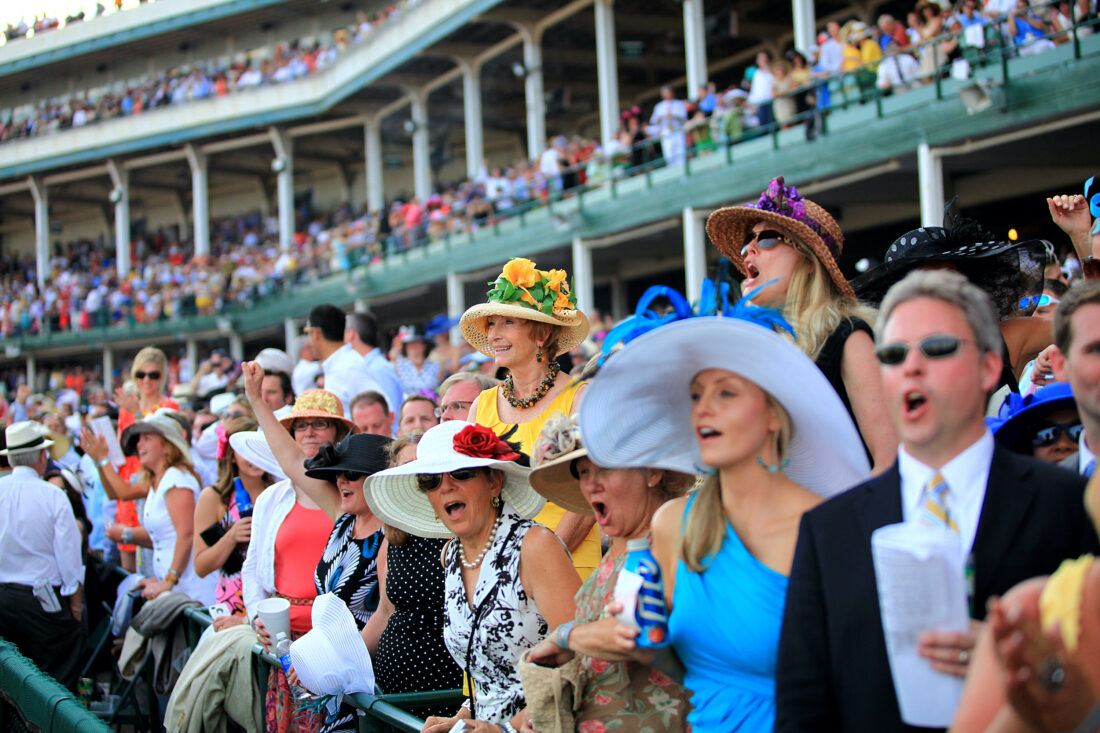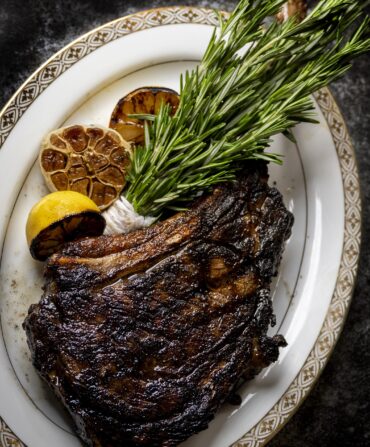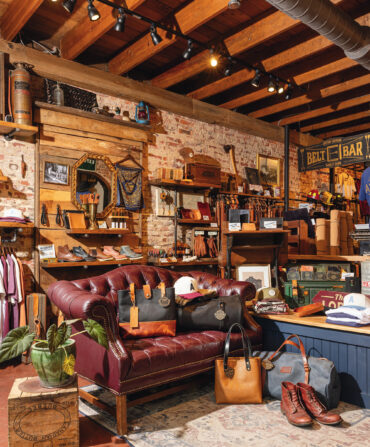When Meriwether Lewis Clark Jr. launched Louisville’s inaugural Kentucky Derby in 1875, he wanted more than a good horse race. He wanted a spectacle, on the track and in the stands.
The young entrepreneur, grandson of explorer William Clark of Lewis and Clark fame and namesake of his grandfather’s famous partner, was fresh off a fact-finding mission to Europe. There, while investigating the profitability of a European-style horse race in Kentucky, the young Clark had seen high society gather at races in Paris and London. Wealthy gentlemen descended from fine horse carriages, smoking cigars and dressed in woolen jackets and bowlers. Their wives joined them attired in sumptuous skirts and silk- and lace-trimmed hats.

A derby might well be good for the Kentucky horse industry, Clark determined as he watched the races. But a bit of pageantry? That could be good for Kentucky.
“On his visits to tracks in Europe and New York, Clark often encountered the view that Kentuckians were merely backwoods country cousins,” says Jessica Whitehead, curator of collections at the Kentucky Derby Museum. “Clark’s new race in Louisville was meant to prove them wrong.”
Early race fans didn’t disappoint Clark’s hopes for a fashionable display. As fifteen three-year-old Thoroughbreds lined up for the first running of the Kentucky Derby, a crowd of ten thousand wealthy spectators looked on, dressed in crisp suits, voluminous skirts, and feather-studded hats. They had come to see and be seen.
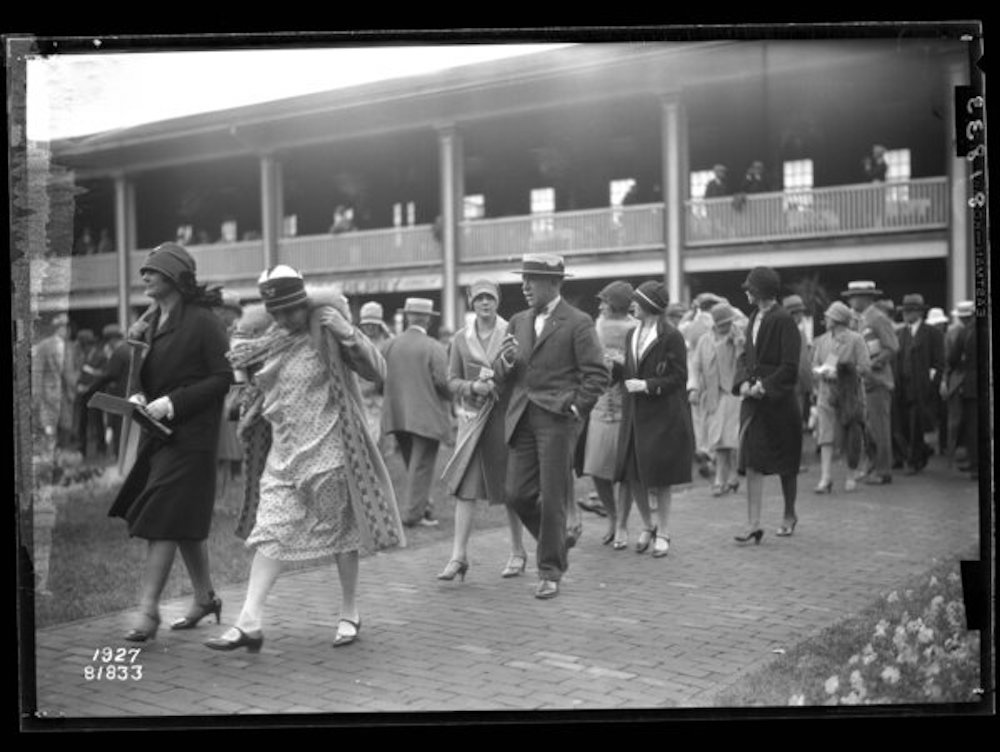
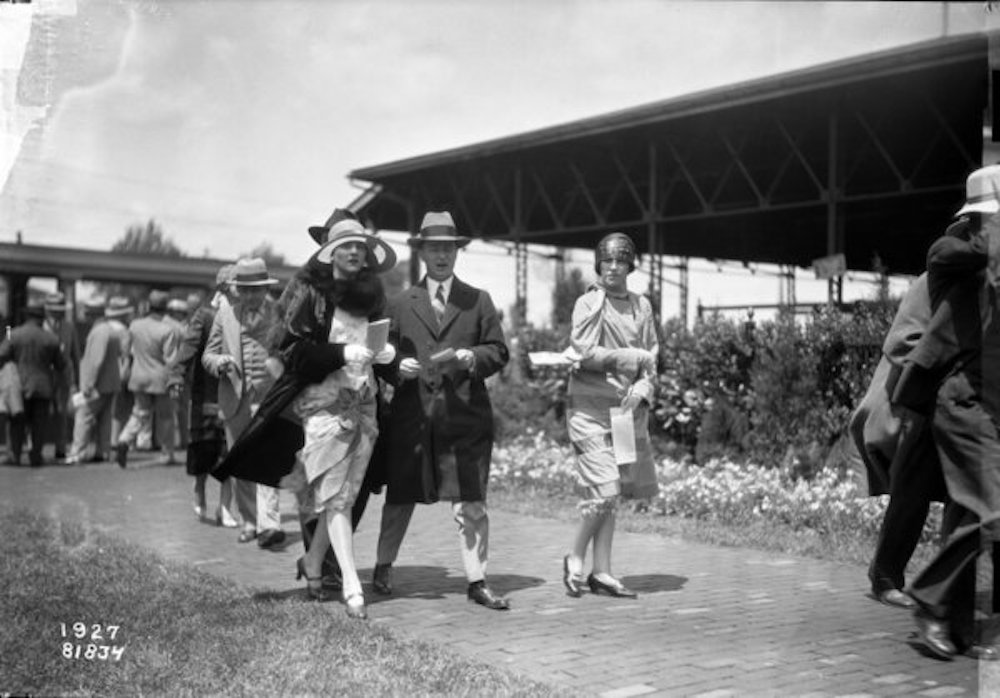
“It was the beginning of the racetrack as runway,” Whitehead says. “The Derby fashion parade.” Some 150 years later, corsets and crinolines have disappeared at Churchill Downs, but smart clothing and fancy hats remain. (Don’t miss the Louisville museum’s new exhibition, opening this summer, See & Be Seen: 150 Years of Derby Fashion, which will share images, stories, and wild ensembles.)
Both American men and women routinely wore hats in public through the 1950s and would just as naturally have donned their fedoras and pillboxes on Derby Day as at any other event. Then, just as the practice of everyday hat-wearing began to wane, television cameras arrived at the Derby.
“Brightly colored clothes and elaborate hats were a way to stand out in the 1960s and seventies,” Whitehead says. “TV was a big part of that. And TV remains a part of that.”
The much-publicized television broadcasts of the British royals’ weddings—Prince William and Kate Middleton in 2011 and Prince Harry and Meghan Markle in 2018—spotlighted London’s artistic headpieces and furthered American fascination with exuberant hats. Remember the elaborate fascinator worn by Princess Beatrice at Prince William and Kate’s wedding?
The Derby is a milliner’s dream come true, and Louisville hatmakers prepare year-round for the annual deluge of orders. They’ve had especially high demand as Churchill Downs celebrates the Derby’s 150th anniversary on May 4. Most women will select hat colors to coordinate with their dress, but red and pink are always trendy. Red is the official color of the Kentucky Derby rose, and pink is the color of the Kentucky Oaks, the fillies-only race run the day before the Derby.
And whether a Derby goer’s style leans more toward understated glamour or unbridled ebullience, there’s a Louisville hat maker happy to oblige.

Jenny Pfanensteil, master milliner and owner of Formé Millinery, has counted Michelle Obama, Oprah Winfrey, and Madonna as clients. She likes to follow traditional hat making techniques, utilizing nineteenth-century hat blocks and braid machines as well as vintage straw, wool, and trims.
“I love taking these old items and giving them new life,” says Pfanensteil, who estimates that she creates approximately 1,500 one-of-a-kind hats for Derby Day alone, 80 percent of them completely custom made. “I focus on little details—horsehair braid, trims from France from the twenties and thirties, and vintage Bakelite hat pins.”
In contrast, Mary Julia Kaiser, owner of Derbyologie, says her hats have been described as “fun on a headband.”
“I like to blend the traditional and the modern,” Kaiser says. “I’ll start with sinamay, which has sculptability, and crinoline, then add a generous mix of feathers and metallic finishes.” While many milliners offer a choice of either hats or fascinators, Kaiser favors hatinators, a more comfortable hybrid of the two that allows for ample brim size while concentrating most of the headpiece’s weight on a sturdy headband.

Melissa Huff, owner of Mad Hatter 502, builds Derby hats, fascinators, and crowns from “anything decorative.” Her works feature feathers, oversized silk flowers, sequins, beads, and even tiny butterflies, birds, or bees. “I just follow my creative instincts,” she says.
Asked whether it is ever appropriate to ask a woman to remove a large hat that’s obstructing a view of the track, all three milliners answer with a firm “no” and an admonition to “deal with it.” All three also concur that the fancy Derby hat is here to stay.
“The Kentucky Derby is an excuse to go all out,” Huff says. “When you wear an elegant hat, you carry yourself differently. You walk with confidence and energy. People love that.”
“The hat will be popular as long as the Derby exists,” predicts Pfanensteil.
Because, tradition aside, says Kaiser, fancy hats are fun. “I have yet to see somebody in a bad mood who’s wearing a Derby hat.”
See stunning hats and stylish attire from last year’s Kentucky Derby.


